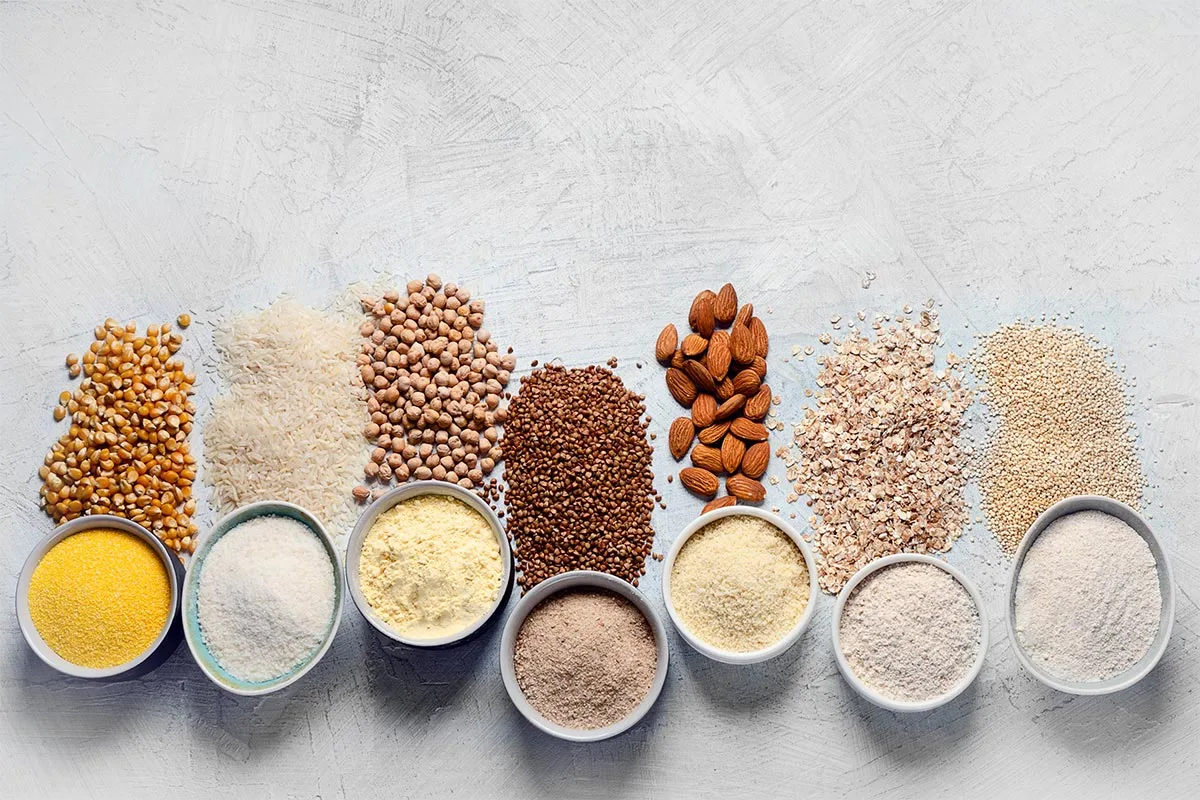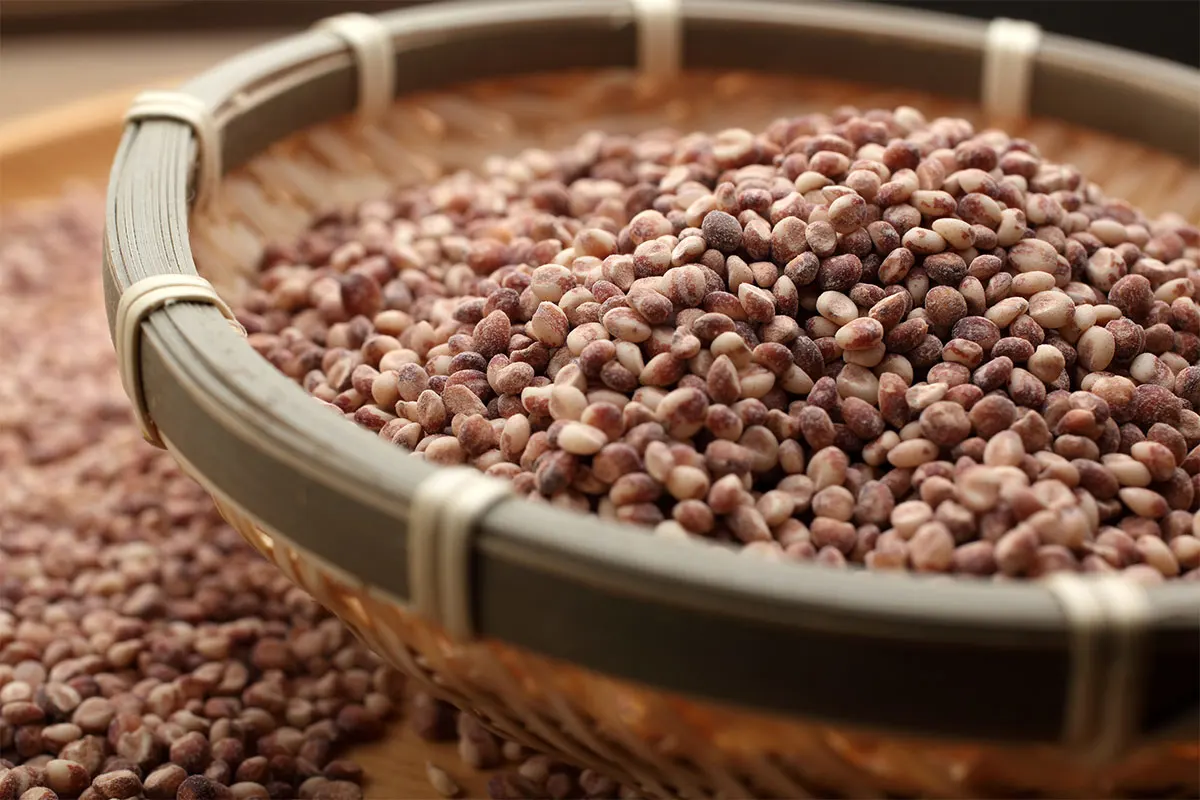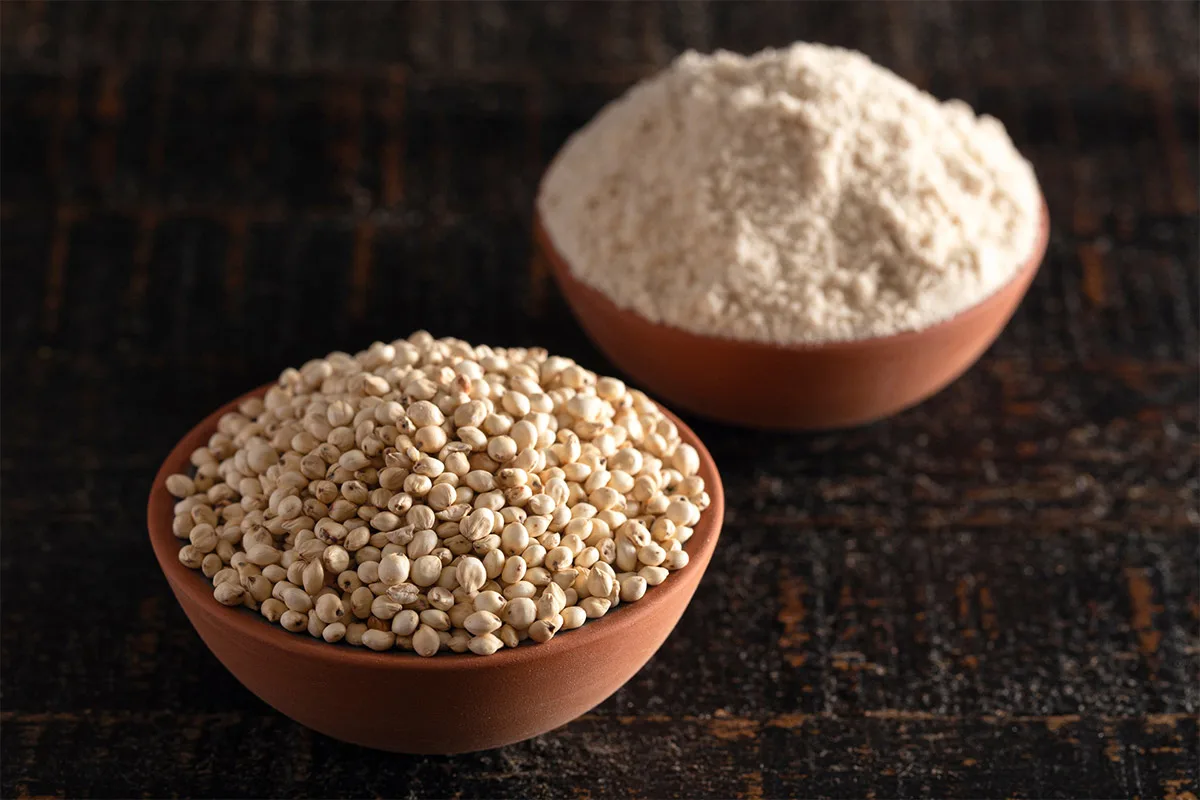Several types of flour can work as a sorghum flour substitute in gluten-free recipes. Let’s discover the best ideas, ranging from millet to chickpea flour.
I experiment with different ingredients in my dishes. Recently, I discovered sorghum flour.
Whole grain sorghum flour is gluten-free, high in protein, and fiber.
Don’t worry if you can’t locate sorghum flour in supermarkets! You’ll find some great replacements for your recipes in this article.
Jump to:

Sorghum flour substitute – what is it?
Any flour that can work in sorghum flour recipes is a sorghum flour substitute.
Sorghum flour is manufactured from ground sorghum grain. The protein, fiber, and minerals like iron and phosphorus included in sorghum flour are beneficial to health.
It replaces wheat flour in gluten-free baking to produce bread, muffins, and cakes.
Sorghum flour substitutes are essential for individuals who lack access to the original ingredient. These alternatives are often gluten-free and have a consistency not dissimilar to that of sorghum flour.
10 best sorghum flour substitutes

- Millet flour
African and Asian cuisines often employ adaptable millet flour. This gluten-free flour is made from millet, an ancient cereal grain.
It has a light texture and sweet, nutty flavor – ideal for creating bread, muffins, and cakes. It also adds essential nutrients to baked foods.
From my experience, millet flour works well in both sweet and savory recipes. I’ve tried making sweet millet cookies with almonds and pistachios. They were a real treat!
For a savory dish, try millet and zucchini cakes. I can’t wait for zucchini season to make these!
- Brown rice flour
Brown rice flour is ground into a powder. Its mild flavor makes it a versatile gluten-free flour. Brown rice flour can make a replacement for sorghum flour in neutral-tasting dishes including pancakes, cookies, and biscuits.
Brown rice flour is healthier than regular flour since it’s strong in fiber and minerals.
- Tapioca flour
Tapioca flour is starchy cassava flour. It thickens gravies, soups, and sauces. Its bland flavor and silky texture make sauces and gravies shine.
Tapioca flour is gluten-free and low in calories, making it ideal for dieters and gluten-sensitive people.
- Quinoa flour
Quinoa, a gluten-free ancient grain, is processed into flour. Quinoa flour makes delicious muffins, cakes, and bread. It replaces wheat flour in baking without gluten.
Gluten-intolerant individuals can benefit greatly from consuming quinoa flour because of the high levels of iron, magnesium, and phosphorus it contains.
Check out this useful post on 9 superfood quinoa substitutes if you’re seeking a quinoa alternative in your cooking.
- Buckwheat flour
Buckwheat, grain from the buckwheat plant, is crushed into gluten-free buckwheat flour. It makes delicious pancakes, waffles, and bread.
Buckwheat flour is commonly mixed with rice flour and tapioca flour to make baked items. Buckwheat banana bread is one of my favorite gluten-free treats!
It isn’t always easy to come by, so consider using these tasty buckwheat flour substitutes.
- Amaranth flour
In gluten-free baking, amaranth flour is a suitable substitute for sorghum flour. It tastes nutty and feels like wheat flour. Protein- and fiber-rich amaranth flour makes healthful baked products.
- Coconut flour
Coconut flour is a popular gluten-free and low-carb baking ingredient derived from ground coconut flesh. Pancakes and pastries benefit from its sweet coconut taste and liquid absorption. It’s denser than sorghum flour, so use it in combo with other flours as an alternative to sorghum flour.
- Almond flour
Ground almonds make a fantastic gluten-free sorghum flour alternative. It tastes sweet and nutty and feels like wheat flour. Dietary fiber, protein, and healthy fats make almond flour a nutritious baking ingredient.
- Potato flour
Dried, crushed potatoes make a wonderful alternative flour for pancakes, waffles, and bread. For gluten-free baking, it binds components and has a moderate taste. Potato flour is also potassium-rich and fiber-rich.
- Chickpea flour
Chickpea flour, sometimes called gram flour, garbanzo flour or besan, can replace sorghum flour in savory dishes like fritters and falafel. Protein and fiber-rich, it tastes nutty.
Chickpea flour, like sorghum flour, is naturally gluten-free, but much denser. That’s why it works better in a blend of flours.
I’ve discussed this type of flour in my post on alternatives to chickpeas. Click it for more info!
How to make sorghum flour?

Homemade sorghum flour can be used in bread, cakes, and savory foods. How to produce sorghum flour:
-
Buy sorghum grains from a grocery shop or online vendor.
-
Rinse sorghum grains.
-
Soak sorghum grains overnight.
-
Drain the water and dry the grains on a clean cloth or baking sheet for a few hours.
-
Bake at 350°F (180°C).
-
Put the dried sorghum grains on a baking sheet in a single layer and toast them in the oven for 30 minutes, stirring regularly, until golden brown and aromatic.
-
Cool roasted sorghum grains.
-
Grind roasted sorghum grains into fine flour in a food processor or grain mill.
Voilà! Ready-made gluten-free sorghum flour. It can last 6 months in an airtight container in a cold, dry environment.
Sorghum flour substitute FAQs

One cup of sorghum flour (121g) provides 434 calories, around 10 grams of protein and 8 grams of fiber.
Sorghum is similar to wheat flour. It’s a grain-based flour that can be used as a gluten-free alternative.
Sorghum and oats are two distinct cereal grains, yet they have many similar nutritional properties and culinary applications.
Yes, millet and sorghum share similar characteristics. They’re both nutritious gluten-free grains.
Sorghum flour is a great alternative to wheat flour in baking. It can give a nutty flavor to baked goods while remaining light and airy.
Yes, you can substitute sorghum flour for all-purpose flour. Since it’s denser, it’s best to use it in a combo with other gluten-free flours such as tapioca, millet, or buckwheat flour.
BOTTOM LINE: If you can’t find sorghum flour, there are some excellent options. Gluten-free and nutritious alternatives include millet flour, brown rice flour, tapioca flour, quinoa flour, and buckwheat flour. Don’t be afraid to experiment with these ideas in your cooking and baking.
I hope this list of sorghum flour alternatives was helpful. Leave a comment with your go-to gluten-free baked goods!
If you need more flour ideas, I’ve also written about sweet rice flour substitutes and alternatives to corn flour.
